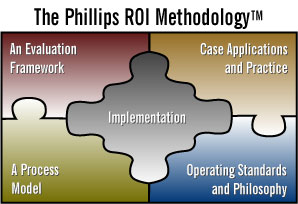 For some evaluators, the act of converting data to monetary value inspires fear, misconception, and bewilderment. But remember, all data can be converted to monetary value. You just need to know what techniques are available to you.
For some evaluators, the act of converting data to monetary value inspires fear, misconception, and bewilderment. But remember, all data can be converted to monetary value. You just need to know what techniques are available to you.
Use Standard Values
Many organizations have standard values to measure turnover, productivity, and quality. If a measure has a monetary value developed and accepted by the organization, there’s no reason to reinvent it. Standard values are generally grouped into three categories: output to contribution, cost of quality, and employees’ time.
When considering output to contribution, look at the value of an additional output. For example, let’s say you work at a passport office and your entire role is to process passports. If you can process one more passport, given the resources and time you have available, the value of that one passport is equivalent to the co
st of processing one passport. This one additional output–the passport–times the cost of processing the passport is the monetary contribution of increasing the output to the organization.
Now consider the cost of quality, another standard value in most organizations. Waste, reject rates, and defects often have assigned monetary values. Other measures, such as re-work, can be converted to monetary value by looking at the cost of the work. For example, when employees make mistakes and errors in reporting, the monetary value of those mistakes is the cost incurred in re- working the report.
Employees’ time is probably the simplest and most basic approach to data conversion. If time is saved due to a program, the first question to ask is, Whose time is it? Then to convert time to monetary value, take time saved multiplied by labor cost and add the percentage of additional value for employee benefits. (This benefits factor can easily be obtained from Human Resources.) A word of caution: When considering employee time as a gain, remember that the time savings is only realized when the amount of time saved is actually used for productive work.
Turn to Historical Costs
When no standard values exist, go to historical costs. The question to ask is, What has a similar incident cost in the past? An example of using historical costs is the case of a sexual harassment prevention program that was implemented in a large health care organization. The measure of the investigation was formal, internal complaints. The value of the complaint was determined by looking at its historical cost, including litigation, legal fees and expenses, settlement losses, as well as investigation and defense of the organization.
Look to Internal or External Experts
When standard values are unavailable and developing the monetary values through historical costs is not feasible, the next option is to go to internal or external experts. It’s important for these experts to fully understand your intent and the business measure you are targeting.
Leverage External Databases
External databases can also provide a wealth of information, including the monetary value of an array of measures. An example of how to use external databases to convert a measure to monetary value is in the case of turnover.
Link with Other Measures
Another technique is to link the value of a measure with others that have already been converted to monetary values. This involves identifying existing relationships to show a correlation between the measure under investigation and another measure to which a standard value has been applied (as in the link between job satisfaction and turnover). Remember, the further you get from the actual monetary value, the lower the credibility of the information.
Use Estimations
Estimates of monetary value can come from participants, supervisors, managers, and even the WLP staff, and can be easily gathered through focus groups, interviews, or questionnaires. The key is to first clearly define the measure so that the people providing estimates have a clear understanding of what you’re looking for, and then to determine the most credible data sources.
Consider the case of absenteeism. The table, below, shows supervisors’ estimates of the per-day cost of one person not showing up for work, the confidence level in that estimate, and the adjusted per-day cost for one absence at $1,061.



